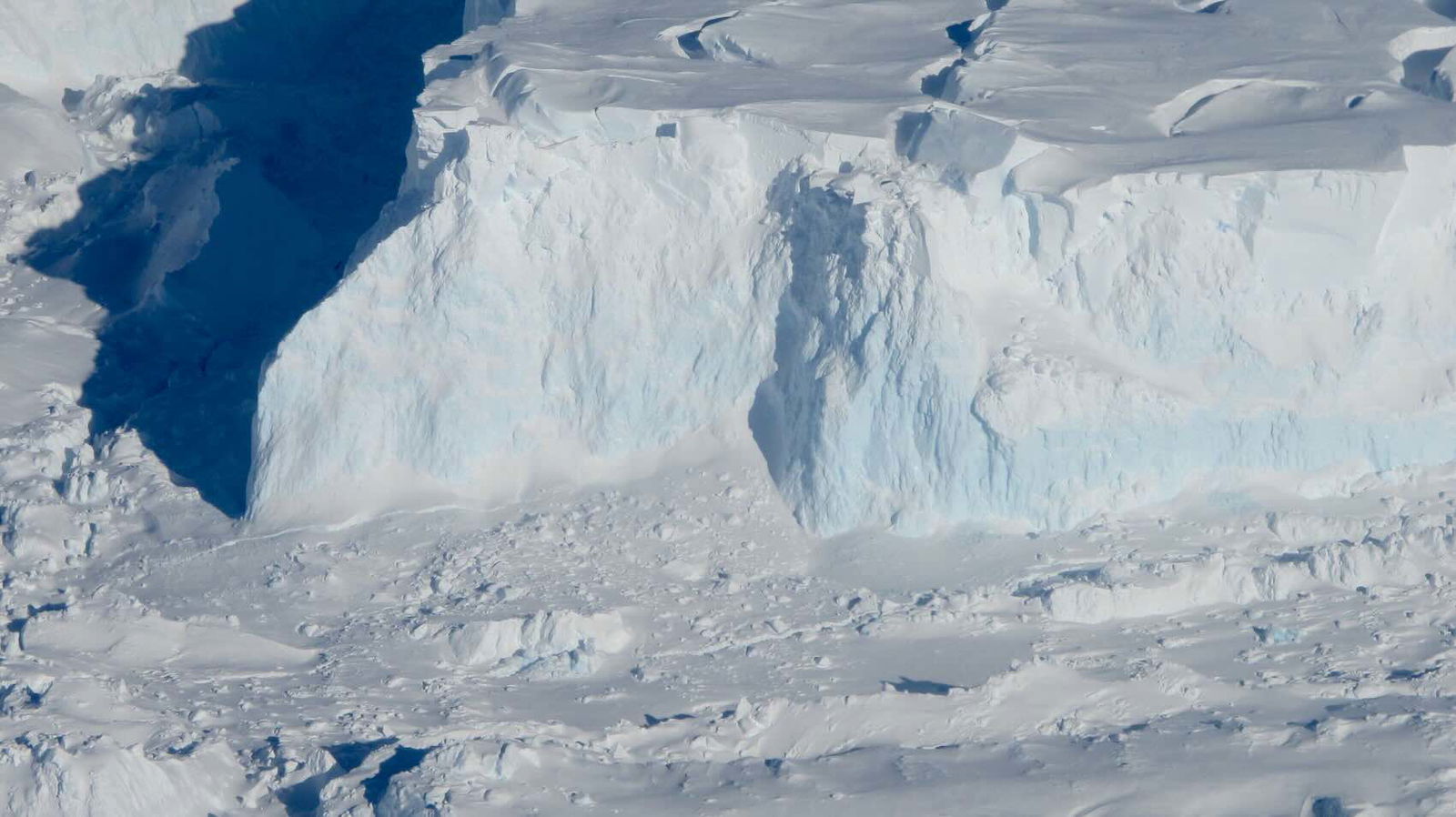Scientists are engaged in international debate over the best solution to averting a potential “Doomsday Glacier” catastrophe, in response to conflicting study results over the summer.
The Thwaites Glacier earned the designation the “Doomsday Glacier” for its role as a sentry against a devastating sea-rise event that could swallow small islands and coastal metropolises. Now, according to two recent studies, controversy over what is occurring with the glacier and what to do about it is becoming a hotly contested issue.
The Doomsday Glacier
The most expansive glacier on Earth, Thwaites spans 80 miles with a total area greater than the state of Florida and comparable to that of Great Britain. Human eyes first glimpsed it during one of Richard E. Byrd’s famous Antarctic expeditions in 1940. The U.S. Navy partially mapped the glacier seven years later as part of Operation Highjump, but complete mapping was not achieved until 1966 by later explorers. The glacier is named in honor of geologist Fredrik T. Thwaites, who never actually visited the site himself.
Its ominous nickname, “Doomsday Glacier,” reflects the pivotal role it plays in a potential cascade of destructive events. The largest glacier in a series that holds back the West Antarctic Ice Sheet (WAIS), a mass of ice roughly the size of India, Thwaites is melting faster than it can be replenished by precipitation, melting that contributes around 4% of the annual global sea level rise.
The glacier contains enough ice to potentially raise sea levels globally by as much as two feet, but its complete collapse would likely trigger an even more catastrophic chain reaction. Scientists warn of the possibility that warm ocean water could flood into the WAIS basin, breaking up and melting ice in an event that would potentially raise sea levels as much as 11 feet, although currently the probability of this scenario remains uncertain.
Thwaites is Melting Rapidly
In May, researchers from the University of California, Irvine, and the University of Waterloo released a concerning study that revealed the impact of tidal currents in hastening Thwaites’ deterioration. Using high-resolution satellite imagery and hydrological data, their analysis revealed that warm water currents are flowing beneath the glacier, melting it from below and possibly accelerating the rate of ice loss.
However, in August, scientists from Dartmouth College and the University of Edinburgh published findings that were far less alarming. They challenged the longstanding Marine Ice Cliff Instability (MICI) hypothesis, which suggests that retreating glaciers form towering ice cliffs that are inherently unstable and prone to collapse. The new research found that the thinning of Thwaites might actually be stabilizing these cliffs, offering a more optimistic outlook.
What to Do About the ‘Doomsday Glacier’
Regardless of whether Thwaites is deteriorating quickly or gradually, the glacier continues to lose ice every year. Much like updated models of nuclear winter that project less severe outcomes than previously thought, large-scale glacial melt and nuclear war remain undesirable scenarios. Scientists and engineers are divided on how to address the issue, with some advocating for geoengineering solutions to mitigate immediate problems associated with glacial melting. Others argue that these measures would only be temporary fixes, and stress the importance of addressing global warming comprehensively.
“When we talk about glacial geoengineering, we need to tell the truth, which is that it’s not a solution to climate change—at best, it’s a painkiller,” said Gernot Wagner of the Columbia University Climate School.
“It allows us to get out of bed and do what is necessary to address the underlying illness while taking the edge off the worst of the pain,” added Wagner, warning that “geoengineering doesn’t solve anything, so we need to use the time it gives us to address emissions.”
Glacial Geoengineering
Even among geoengineering advocates, there is currently no consensus. John Moore of the University of Lapland’s Arctic Center cautioned that “It will take 15 to 30 years for us to understand enough to recommend or rule out any interventions.” Moore was a contributor to a University of Chicago Climate Systems Engineering Initiative report, which emphasized the need for further study and the urgency of acting before climate change reaches a tipping point.
Some proposed geoengineering ideas are unconventional. One approach involves constructing a massive curtain, anchored to the seabed and held afloat, to block warm water from reaching the glacier. While this approach has some advocates, it comes with significant drawbacks that include the potential disruption of the natural flow of marine life and nutrients, which would only temporarily alleviatie the symptoms of climate change rather than addressing its root causes.
The recent research into the Thwaites glacier was detailed in a series of papers, “Widespread Seawater Intrusions Beneath the Grounded Ice of Thwaites Glacier, West Antarctica” which appeared on May 20, 2024 in the Proceedings of the National Academy of Science; “The West Antarctic Ice Sheet May Not be Vulnerable to Marine Ice Cliff Instability During the 21st Century” which appeared on August 21, 2024 in Science Advances; and the white paper, “Glacial Climate Interventions: a Research Vision,” made available from the University of Chicago.
Ryan Whalen covers science and technology for The Debrief. He holds a BA in History and a Master of Library and Information Science with a certificate in Data Science. He can be contacted at ryan@thedebrief.org, and follow him on Twitter @mdntwvlf.

